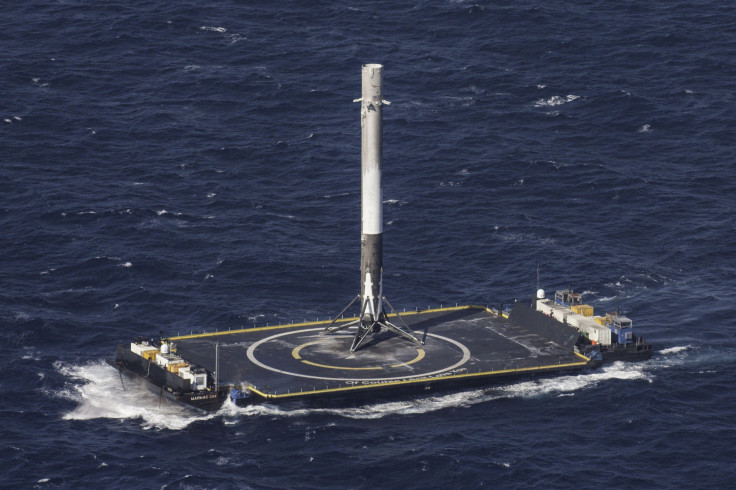SpaceX Falcon 9 Launch Live Stream: Can Elon Musk Repeat Success Landing On Ocean Barge ‘Of Course I Still Love You’

UPDATE: May 6, 1:45 a.m. EDT -- He did it again.
Landing confirmed. Second stage continuing to carry JCSAT-14 to a Geosynchronous Transfer Orbit. pic.twitter.com/HfHI5cwoYX
— SpaceX (@SpaceX) May 6, 2016
May need to increase size of rocket storage hangar
— Elon Musk (@elonmusk) May 6, 2016
Original story begins here. Scroll down to watch the replay of the live broadcast.
Can he do it again?
On Friday, Space Exploration Technologies Corp. founder Elon Musk will try to repeat a successful attempt to pitch a SpaceX rocket from the Florida coastline to a robotic platform floating in the Atlantic Ocean. This time, however, the company’s Falcon 9 rocket will be moving much faster and higher than the one that deftly kissed the floating barge last month and landed a spot in future aerospace history books.
The April 8 landing, part of the CRS-8 Dragon mission that delivered a payload to the International Space Station, proved Musk’s idea that first-stage rockets can be recovered instead of dropped into the ocean like very expensive garbage. Eventually, SpaceX wants to reuse these rockets, saving about 30 percent of the cost of sending satellites, astronauts and other payloads into orbit, according to SpaceX President Gwynne Shotwell, one of Musk's closest business confidants.
But this idea is still in its experimental stage and would require repeated successes to become part of normal operating procedures in 21st century space transport.
Friday’s launch will be SpaceX’s second attempt to recover a rocket that needs to fly faster and higher, in this case to deliver Japanese communications satellite JCSAT-14 into geostationary orbit more than 22,000 miles above the Equator.
The rocket that landed on the barge last month needed thrust to deliver a payload to the space station just 249 miles above the earth’s surface. The greater the orbit height, the longer the descent back to the floating landing platform. (In case you're wondering about the name of the vessel dubbed “Of Course I Still Love You”: It's Musk homage to the late science fiction novelist Ian M. Banks.)
“CRS-8 was a low Earth orbit mission; due to the higher velocity required for Friday’s geostationary launch, SpaceX are less optimistic about the chances of succeeding,” said a report Thursday from NASASpaceFlight.com, which tracks space flight missions.
The launch from the company’s Space Launch Complex 40 at Cape Canaveral Air Force Station, Florida, is set for 1:21 a.m. EDT Friday, with the SpaceX live stream coverage beginning shortly after.
The SpaceX JCSAT-14 launch live stream can be viewed below. There is a hosted broadcast and a technical broadcast that includes rocket views and telemetry information.
Hosted broadcast
Technical broadcast
© Copyright IBTimes 2025. All rights reserved.




















